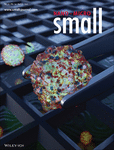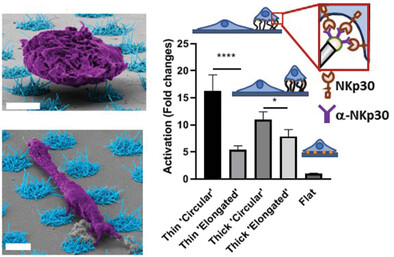Journal list menu
Export Citations
Download PDFs
Cover Picture
Liver-on-a-Chip: Bioengineered Multicellular Liver Microtissues for Modeling Advanced Hepatic Fibrosis Driven Through Non-Alcoholic Fatty Liver Disease (Small 14/2021)
- First Published: 08 April 2021
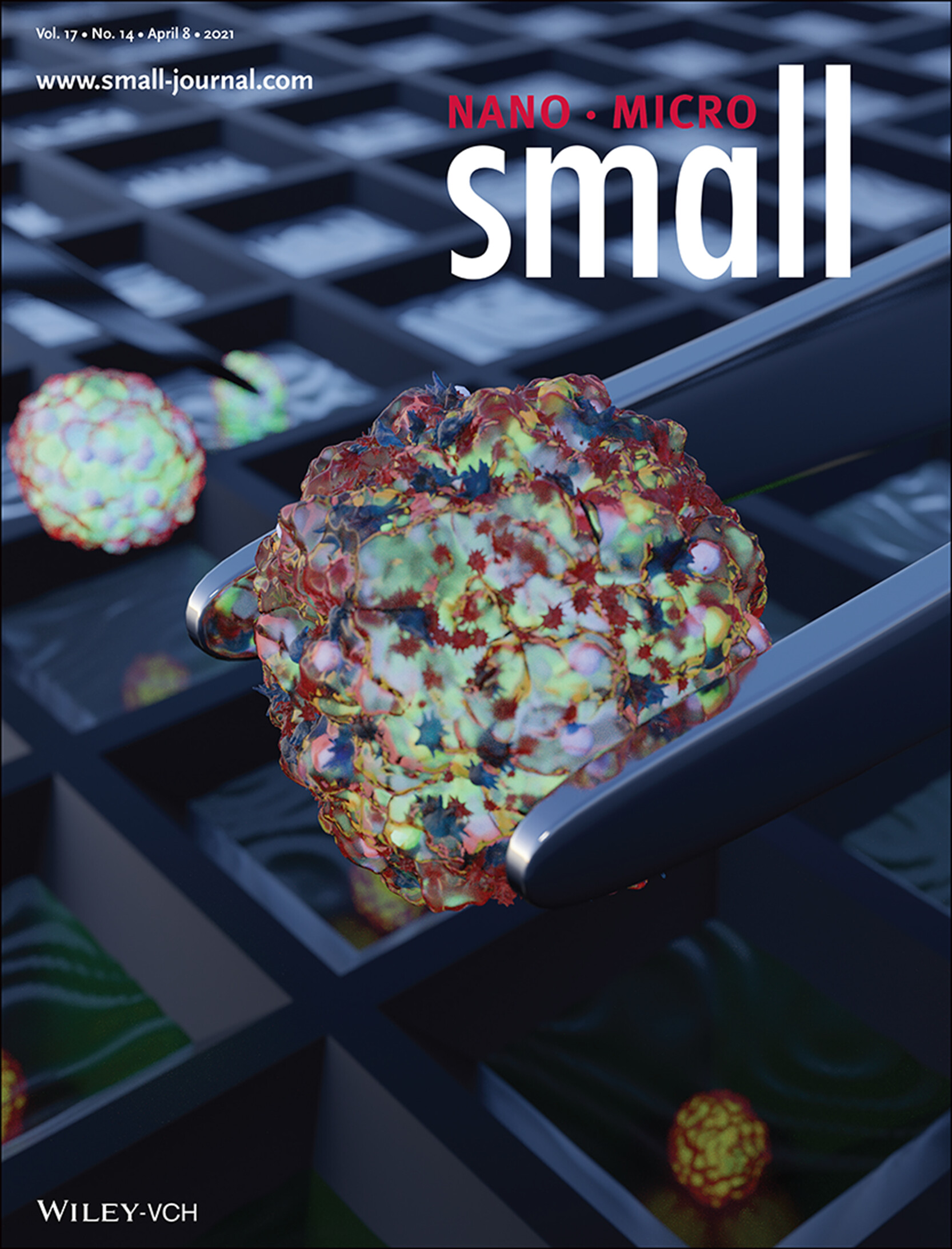
In article number 2007425, Junmin Lee, Ali Khademhosseini, and co-workers present a breakthrough for modeling of non-alcoholic fatty liver disease (NAFLD) based on bioengineered multicellular liver microtissues and a liver-on-a-chip system. The microtissues consisting of four major liver cell types (primary human hepatocytes, stellate cells, Kupffer cells, and endothelial cells) recapitulate the pathogenesis of hepatic fibrosis driven by NAFLD.
Inside Front Cover
Piezoelectric Nanogenerators: Polarization- and Electrode-Optimized Polyvinylidene Fluoride Films for Harsh Environmental Piezoelectric Nanogenerator Applications (Small 14/2021)
- First Published: 08 April 2021
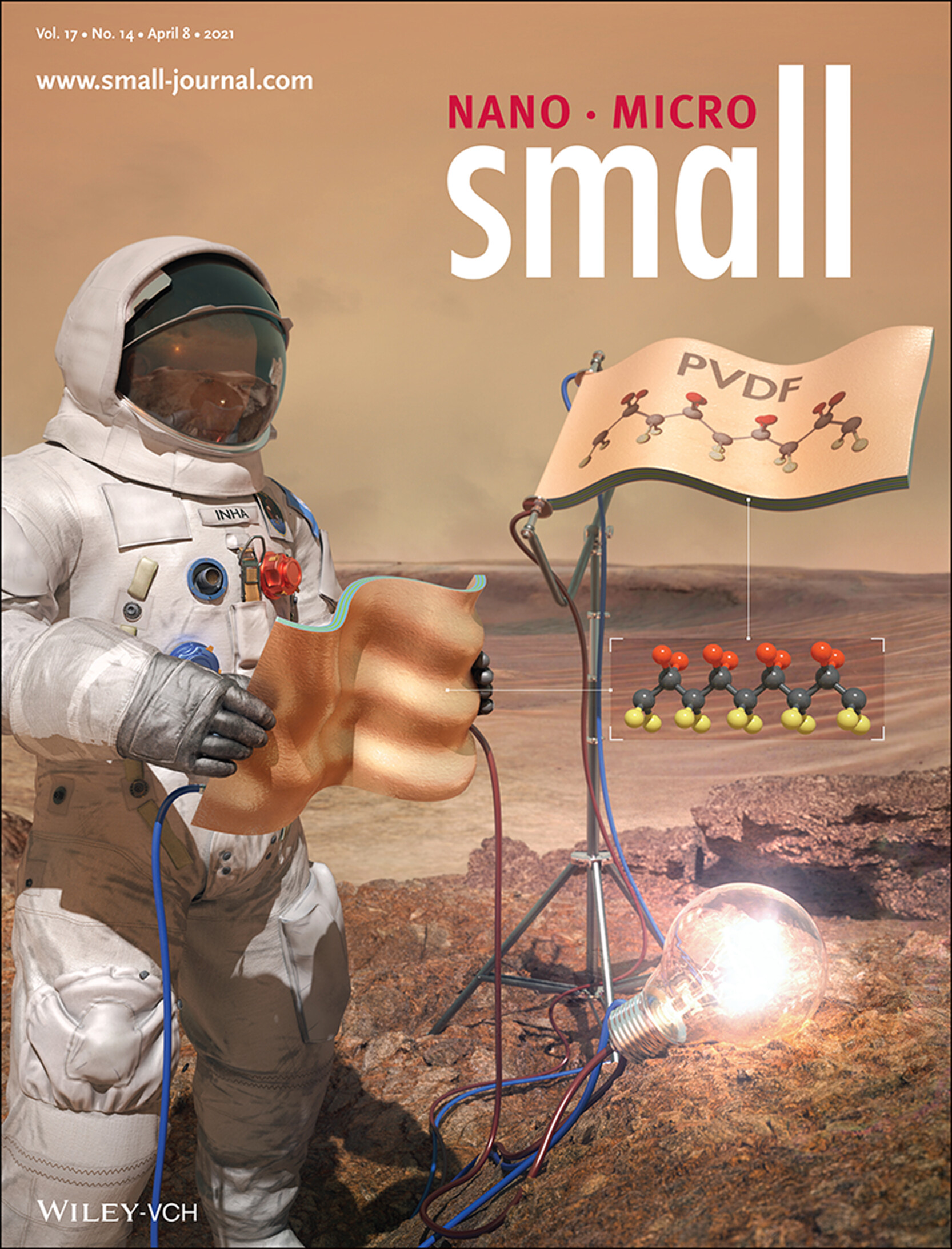
In article number 2007289, Jong Hoon Jung, and co-workers report a highly stable power source application of piezoelectric nanogenerator in the harsh environmental conditions of cryogenic temperatures, low pressures, large temperature/pressure fluctuations, and strong ultraviolet. The polarization- and electrode-optimized ferroelectric polymer-based piezoelectric nanogenerator can be used in Mars to power light-bulbs by scavenging the mechanical vibrations of dust storms and biomechanical vibrations of astronauts.
Inside Back Cover
Graphene Nanocylinders: Hybridized Radial and Edge Coupled 3D Plasmon Modes in Self-Assembled Graphene Nanocylinders (Small 14/2021)
- First Published: 08 April 2021
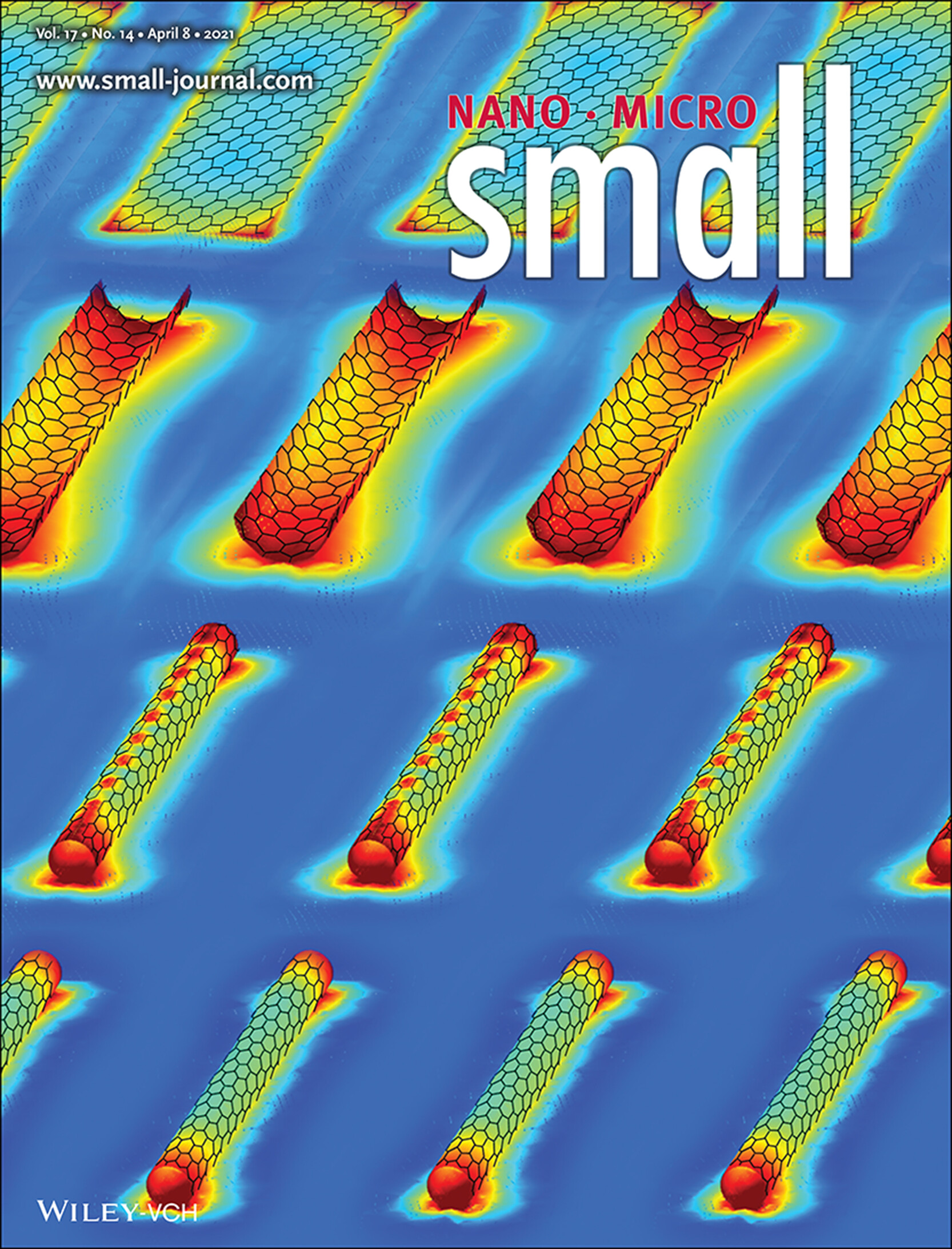
In article number 2100079, Jeong-Hyun Cho and co-workers report hybridized 3D plasmon modes stemming from 3D graphene nanostructures, resulting in non-surface-limited (volumetric) field enhancements and a four orders of magnitude stronger field at the openings of cylinders than in rectangular 2D graphene ribbons.
Back Cover
Silicasome Nanocarriers: Development of Facile and Versatile Platinum Drug Delivering Silicasome Nanocarriers for Efficient Pancreatic Cancer Chemo-Immunotherapy (Small 14/2021)
- First Published: 08 April 2021

Effective delivery of activated oxaliplatin to pancreatic cancer achieved by a tailored silicasome nanocarrier is reported by Andre E. Nel, Huan Meng, and co-workers in article number 2005993. This provides a strong immunogenic cell death stimulus that turns the “cold” immunological status into “hot” at tumor site, enabling superior chemo-immunotherapy synergy with anti-PD-1.
Masthead
Reviews
Recent Advances in 2D Group VB Transition Metal Chalcogenides
- First Published: 10 March 2021
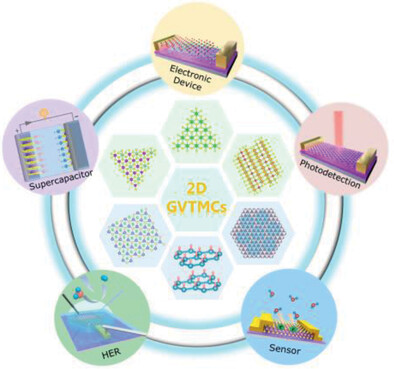
2D group VB transition metal chalcogenides have attractive properties, including ultrahigh conductivity, in-plane anisotropy, ferromagnetism, charge density wave transition, high biochemical sensitivity, high electrocatalytic activity, and excellent energy storage performance, thus making them great potential in electronics, optoelectronics, spintronics, sensors, and electrochemistry.
Evolution of Metastasis Study Models toward Metastasis-On-A-Chip: The Ultimate Model?
- First Published: 11 March 2021
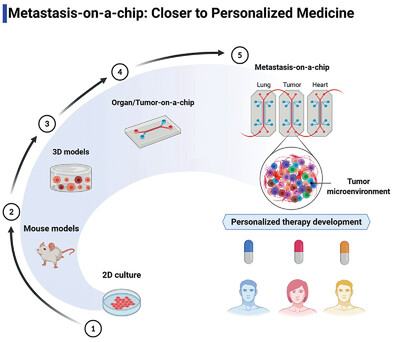
This work provides a new vision about the paradigms of metastasis, as well as the evolution of study models for its resolution. Tumor-on-a-chip are extensively described, being discussed whether they have the capacity to synthesize minimal functional units that recapitulate the biological processes involved in metastasis. The main problems to solve for translation to the clinical arena are also highlighted.
Communications
Fully Controllable Structural Phase Transition in Thermomechanical Molecular Crystals with a Very Small Thermal Hysteresis
- First Published: 12 March 2021

The shape deformation of the thermomechanical crystals based on 4-DBpFO can be finely controlled with a very small reversible thermal hysteresis, benefiting from the elastic energy stored between two parallel phase boundaries during the structural phase transition. These features bring these thermomechanical organic crystals a step closer to applications in areas including organic shape memories, rapidly repeatable actuators, and flexible optical waveguides.
High-Yield Exfoliation of Ultrathin 2D Ni3Cr2P2S9 and Ni3Cr2P2Se9 Nanosheets
- First Published: 11 March 2021
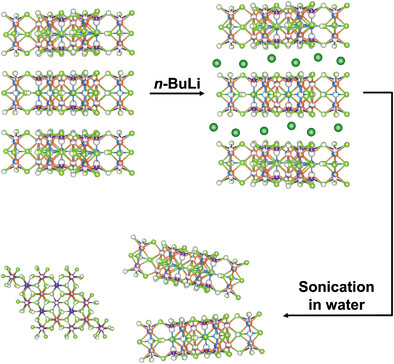
High-yield and large-scale production of ultrathin solution-processable quaternary metal thiophosphate nanosheets, such as Ni3Cr2P2S9 and Ni3Cr2P2Se9, are reported. The fabricated thin film based on the exfoliated ultrathin Ni3Cr2P2S9 nanosheets is used as an electrode material for supercapacitor, showing good specific capacitance.
Printed Stretchable Liquid Metal Electrode Arrays for In Vivo Neural Recording
- First Published: 12 March 2021
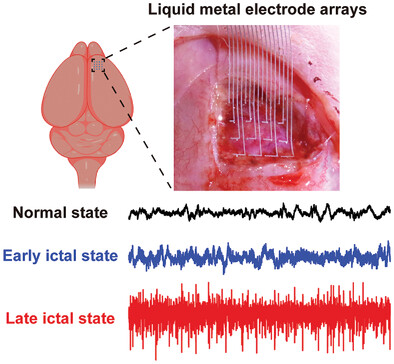
Based on the liquid metal–polymer conductor, a new strategy for fabricating highly stretchable neural electrode arrays for neural interfaces is presented. The screen-printed stretchable electrode arrays show high resolution (50 µm in width), excellent stretchability (≈108%), and good biocompatibility. Based on stretchable electrode arrays, real-time monitoring of epileptiform activities at different states of seizure can be provided.
Research Articles
Bioengineered Multicellular Liver Microtissues for Modeling Advanced Hepatic Fibrosis Driven Through Non-Alcoholic Fatty Liver Disease
- First Published: 09 March 2021
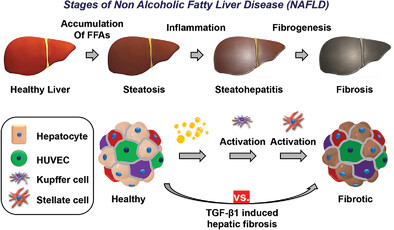
In this paper, a human non-alcoholic fatty liver disease (NAFLD)-on-a-chip platform containing bioengineered primary multicellular liver microtissues is developed for modeling hepatic fibrosis driven by NAFLD. These results from the suggested platform shed light on the role of the design strategy of liver disease models in accurately detecting disease progression and identifying potential drug candidates more effectively.
Multiparametric Profiling of Single Nanoscale Extracellular Vesicles by Combined Atomic Force and Fluorescence Microscopy: Correlation and Heterogeneity in Their Molecular and Biophysical Features
- First Published: 07 March 2021
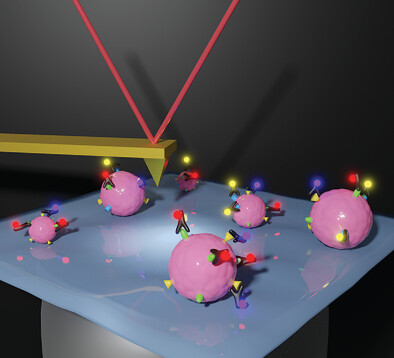
Extracellular vesicles (EVs) offer unique opportunities for both diagnostics and therapeutics. In this paper, the advantages of using a combined fluorescence and atomic force microscopy for multiparametric profiling of single small EVs (sEVs) are presented. By studying and correlating membrane protein compositions, size, and mechanical properties of single sEVs, the platform can provide new insights about EV subpopulations and heterogeneity.
Polarization- and Electrode-Optimized Polyvinylidene Fluoride Films for Harsh Environmental Piezoelectric Nanogenerator Applications
- First Published: 11 March 2021
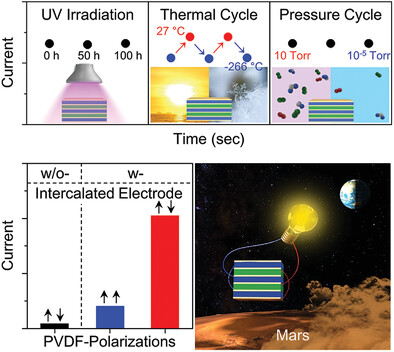
Polarization- and electrode-optimized polyvinylidene fluoride (PVDF) films for harsh environmental piezoelectric nanogenerator (PENG) applications are demonstrated. Alternate electric polarization of PVDF and intercalation of Ag electrode enhance piezoelectric outputs. PENG generates a stable power after prolonged irradiation of UV, large temperature-/pressure-variations, and excessive mechanical vibrations, which suggests a reliable power source in harsh environments of polar areas of Earth and Mars.
Conjugated π Electrons of MOFs Drive Charge Separation at Heterostructures Interface for Enhanced Photoelectrochemical Water Oxidation
- First Published: 10 March 2021
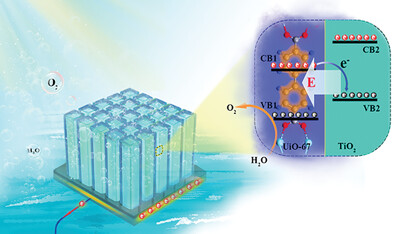
The heterojunctions of UiO-MOF shell coating TiO2 nanorod surface are promising as photoanode in photoelectrochemical cells to enhance photocurrent density. The conjugated π electrons in UiO-67 shell are able to strengthen the intensity of interfacial electric field. The charge transfer at heterojunction interface thereby follows Z-scheme, promoting the electron–hole separation during photoelectrochemical water oxidation.
Hybridized Radial and Edge Coupled 3D Plasmon Modes in Self-Assembled Graphene Nanocylinders
- First Published: 12 March 2021
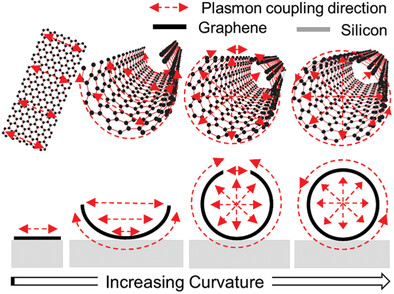
3D graphene nanocylinders are fabricated using a high yield and precisely controlled self-assembly technique. The nanocylinders induce simultaneous edge and radial coupling as revealed by the synchrotron infrared nanospectroscopy. The 3D coupled modes exhibit volumetric near-field enhancement and propagating edge modes in the nanocylinders that are four orders of magnitude stronger than the enhancement in 2D graphene ribbons.
Nanoengineered CAR-T Biohybrids for Solid Tumor Immunotherapy with Microenvironment Photothermal-Remodeling Strategy
- First Published: 12 March 2021
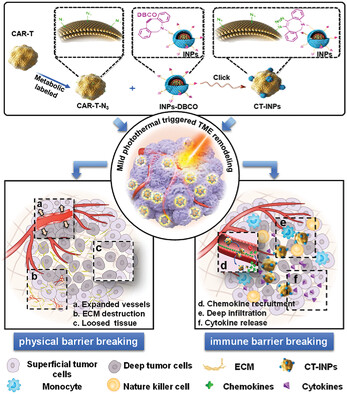
Nanoengineered chimeric antigen receptor T cell (CAR-T) biohybrids (CT-INPs) integrate original biological functions of CAR-T cells and microenvironment photothermal-remodeling ability of indocyanine green nanoparticles (INPs) through accurate control and optimization of conjugation between CAR-T cells and INPs. Mild photothermal-mediated tumor microenvironment-remodeling boosts CAR-T cell immunotherapy by breaking physical and immune barriers.
Nanowire Based Guidance of the Morphology and Cytotoxic Activity of Natural Killer Cells
- First Published: 14 March 2021
Single-Nanoparticle Coulometry Method with High Sensitivity and High Throughput to Study the Electrochemical Activity and Oscillation of Single Nanocatalysts
- First Published: 14 March 2021
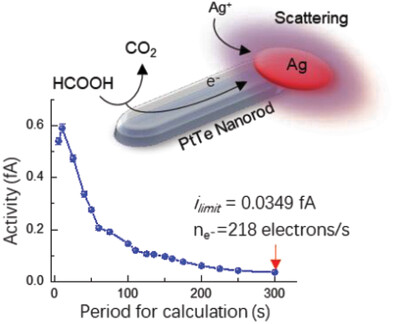
Based on the microbattery reaction consisting of the formic acid electro-oxidation and Ag deposition on the single nanocatalyst surface, a novel single-nanoparticle coulometry method by dark-field microscopy is developed with sub-fA level sensitivity (detect limit of 34.9 aA) and high throughput (319 nanoparticles), which reveals electro-oxidation catalytic activity and electrochemical oscillation of single PtTe nanocatalysts.
Full Papers
Development of Facile and Versatile Platinum Drug Delivering Silicasome Nanocarriers for Efficient Pancreatic Cancer Chemo-Immunotherapy
- First Published: 07 March 2021

Stable and highly efficient loading of activated platinum drugs is achieved using a silicasome nanocarrier through the use of electrostatic and coordination chemistry. This enables chemo-immunotherapy illustrated by an activated oxaliplatin (1,2-diamminocyclohexane platinum(II), DACHPt) laden silicasome, which provides a strong immunogenic cell death stimulus at Kras-mutated pancreatic cancer site. DACHPt laden silicasome synergizes with anti-PD-1 yielding superior anti-cancer effect in vivo.
Model Lipid Membranes Assembled from Natural Plant Thylakoids into 2D Microarray Patterns as a Platform to Assess the Organization and Photophysics of Light-Harvesting Proteins
- First Published: 09 March 2021

A polymerized lipid bilayer (purple) templates the self-assembly of “hybrid membranes” from thylakoid membranes (green) and synthetic lipids (colorless). During membrane formation, transmembrane proteins migrate from thylakoids into underlying lipid bilayers, decreasing the protein concentration and uncoupling protein-protein interactions (manifested as increased fluorescent lifetimes). These hybrid membranes are used to delineate the relationship between photophysics and structure of light-harvesting complexes.
Potential of Magnetic Hyperthermia to Stimulate Localized Immune Activation
- First Published: 18 March 2021
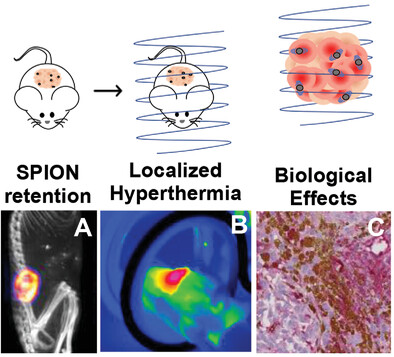
Localized heating is generated using superparamagnetic iron-oxide nanoparticles (SPIONs) stimulated by an alternating magnetic field. A) Imaging of radiolabelled SPIONs enable real-time fate tracking while B) SPION heating ability is monitored using thermal imaging. C) Heat-shock responses within tumors and characterization of tumor infiltrating lymphocyte populations demonstrate localized immune activation.
Highly-Dispersed Submicrometer Single-Crystal Nickel-Rich Layered Cathode: Spray Synthesis and Accelerated Lithium-Ion Transport
- First Published: 12 March 2021
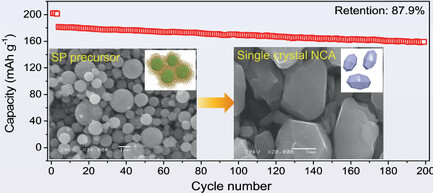
To balance the contradiction between high crystallinity and cation disordering, a ultra-fast spray pyrolysis is employed to prepare high-chemical-activity Ni0.8Co0.15Al0.05Ox precursor, enabling efficient low-temperature fabrication of highly-dispersed submicron single-crystal LiNi0.8Co0.15Al0.05O2, which delivers fast lithium-ion diffusion channel and inhibits the proliferation of micro-cracks, accounting for superior rate capability and improved cycle performance, respectively.
Enhanced Stability of All-Inorganic Perovskite Light-Emitting Diodes by a Facile Liquid Annealing Strategy
- First Published: 11 March 2021
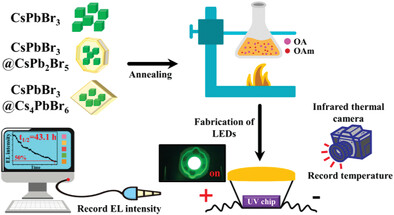
A simple liquid annealing strategy is proposed to reduce the photoluminescence loss of perovskite materials under higher temperature condition and to prolong the working stability in light-emitting diodes devices. The annealed perovskite materials exhibit excellent thermal cycle stability, which will bring a new dawn to the commercialization of next-generation optoelectronic devices.
Engineering All-Purpose Amorphous Carbon Nanotubes with High N/O-Co-Doping Content to Bridge the Alkali-Ion Batteries and Li Metal Batteries
- First Published: 18 March 2021

An all-purpose electrode material (APEM) composed of amorphous carbon nanotubes with high N/O-co-doping content (NOPCT) is prepared. NOPCT can deliver outstanding behaviors in cycle and rate capability for Li/Na-ion batteries, Li nucleation/growth serving as host of Li anode, and suppressing shuttle effect of Li polysulfides in Li–S batteries. It provides a profound insight into the design of APEM.
Facile and Efficient Fabrication of Branched Si@C Anode with Superior Electrochemical Performance in LIBs
- First Published: 11 March 2021
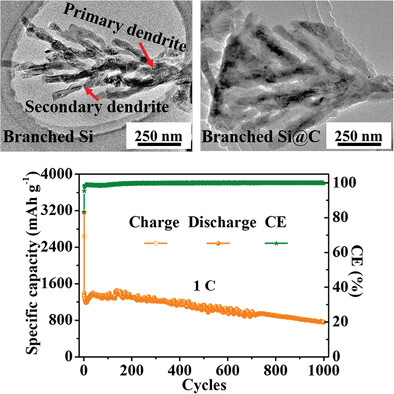
A novel branched Si architecture is fabricated through laser processing and dealloying. The branched Si, composed of both primary and interspaced secondary dendrites, leads to improved area capacity and cycling stability. By coating a carbon layer, the branched Si@C anode achieves a higher capacity as well as improved rate performance and cycling life.
Polymorphic Effects on Electrochemical Performance of Conversion-Based MnO2 Anode Materials for Next-Generation Li Batteries
- First Published: 11 March 2021

The charge storage reaction and phase evolution of different polymorphs of MnO2 are similar; after the first cycle, spinel-phased λ-MnO2 is formed instead of the recovery of the initial crystal structures. However, the electrochemical performances show variation among the polymorphs owing to the faster reaction kinetics in λ-MnO2, emphasizing the influences of polymorph in designing high-performance electrode materials.
Biomimetic, Stiff, and Adhesive Periosteum with Osteogenic–Angiogenic Coupling Effect for Bone Regeneration
- First Published: 11 March 2021
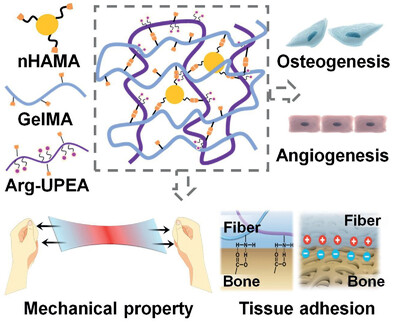
A periosteum mimicking bone aid (PMBA) with superior mechanical and bioactive properties is developed. The methacrylated gelatin (GelMA) and l-arginine-based unsaturated poly(ester amide) (Arg-UPEA) equip PMBA with superior adhesion properties, while the methacrylated hydroxyapatite nanoparticles (nHAMA) significantly increase its mechanical performances. Calcium ions and l-arginine release can coordinate to coactivate nitric oxide–cyclic guanosine monophosphate (NO–cGMP) signaling pathway and achieve osteogenic–angiogenic coupling effect.
Antigen-Presenting Hybrid Colloidal Crystal Clusters for Promoting T cells Expansion
- First Published: 12 March 2021
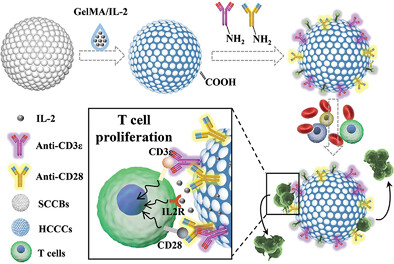
A novel kind of antigen-presenting scaffolds loaded with prosurvival cytokines and activating antibodies is developed for promoting T cell expansion. These scaffolds effectively promote the proliferation of T cells, which exhibit robust antitumor capability in vitro. This research offers an ideal platform for the activation of T cells and serves as a novel approach for T cells’ clinical manufacturing.




